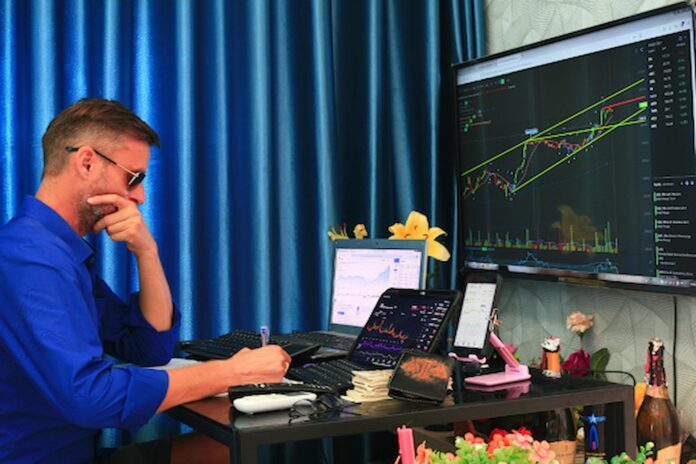Most retail traders focus on spot forex. They look at candlesticks, support and resistance levels, and maybe a bit of fundamentals. In 2024, a growing number of intermediate-level traders are learning how to use forex options data to predict when big moves are coming in the spot market. It’s not just a hedge fund tool anymore.
With better data access, simplified dashboards, and community-shared insights, this flow has become a signal, not just noise. Let’s break down how forex options flow works, why it matters, and how traders are using it to front-run breakouts before they show up on your chart.
What Is Options Flow in Forex, Anyway?
Options flow refers to the volume and structure of trades happening in the forex options market, especially large institutional trades. This includes:
- Directional option buys (calls or puts)
- Implied volatility spikes
- Large option expiries near key strike prices
- Skew shifts (difference in call vs. put pricing)
In the equities world, traders often talk about unusual options activity. In forex, it’s subtler, but it’s still there, and often more predictive because of how options dealers hedge their exposure. For short-term traders looking to understand forex trading strategy, tracking this flow can offer critical insight into near-term price pressure and potential breakout zones.
Why Spot Forex Reacts to Options Flow
Here’s the chain reaction:
- Institutional player buys a big call option on EUR/USD at 1.0800 with 2-day expiry
- The options dealer who sold it needs to hedge that exposure
- To do that, the dealer might buy EUR/USD spot or futures
- This creates real spot demand that pushes price toward the strike
- Retail traders then see the breakout — but the smart money was already positioned
This hedging behavior is known as delta hedging, and it’s one of the reasons spot FX often accelerates into large option expiries.
According to a CME Group whitepaper in late 2024, options-related delta hedging accounted for 8–15% of intraday spot moves during high-volatility periods in major pairs like EUR/USD and USD/JPY.
What Traders Are Watching in 2025
The most common things traders are tracking:
- Max Pain Levels: Where most options lose money, often magnets for spot price
- Notional Size at Strikes: Where billions are sitting in open interest
- Volatility Clusters: Spikes in implied volatility at key levels
- Gamma Zones: Areas where dealer hedging behavior flips from buying to selling
If you know where the pressure builds, you can get in before price moves, not after.
How to Access Options Flow Without Overkill
You don’t need a Bloomberg terminal to track this stuff anymore. Here are a few practical tools:
- QuikStrike (Basic Access): Daily FX options OI heatmaps
- FXStreet’s Option Expiry Reports: Free summaries of upcoming expiries and strike clusters
- VolSignal / Tier1Alpha: Subscription platforms that highlight flow and skew shifts
- TradingView Custom Scripts: Some coders now offer gamma exposure overlays for major FX pairs
Keep it simple. You don’t need to trade the options. Just use them as a roadmap.
Risk: This Is Not a Beginner’s Shortcut
Let’s be clear. Watching options flow is not a magic trick. It’s not always right. Sometimes the flow is there, but price doesn’t follow. Other times, price moves before you react.
You still need:
- Strong chart-reading skills
- Context on macro sentiment
- Timing discipline
But if you’re looking for extra confirmation or a reason to lean into a setup, options flow gives you a peek at where large players are placing bets.
How to Start Using Options Flow in Your Trading Plan
Here’s a clean approach to begin integrating options flow into your spot trading:
- Pick One Pair: Start with a major like EUR/USD or USD/JPY. These have the most options data.
- Track Daily Expiry Reports: Check morning updates for large expiries (over $1 billion notional) near current price.
- Mark Strike Levels on Your Chart: Treat them like zones of interest, not fixed support or resistance.
- Watch Price Behavior as It Nears These Levels: Do you see acceleration? Front-running? Hesitation?
- Add Flow as a Filter, Not a Trigger: If your chart setup aligns with flow, consider it a green light. If it doesn’t, stay cautious.
Final Thoughts: Trading What’s About to Happen, Not What Just Did
The edge in today’s FX market often comes from anticipation, not reaction. Retail traders have gotten good at chart patterns. But the smarter ones are now going one layer deeper, reading flow, watching dealer behavior, and understanding why price might move before it does.
Using forex options flow isn’t about trading options. It’s about learning to think like the players who move spot with their hedges.
And when you start trading like them, or at least trading in front of them, you stop chasing the breakout and start being the breakout.




























